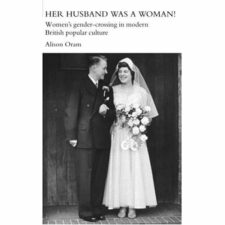This month we may see widespread strikes by public workers, but, this isn’t the first time workers have stood up for their rights, whether for better pay, better conditions or fairer treatment. Moreover, women have always been part of this history. In 1926, there was a General Strike, called by the Trade Union Congress in response to a desire to lower the wages of miners. The General Strike lasted nine days, but the miner’s lockout lasted for seven months, placing incredible stress on a workforce that was unlikely to have large savings. While this was a dispute that affected only one occupation, workers across Britain came out in solidarity, including railwaymen, transport workers, printers, dockers, ironworkers and steelworkers. While many of these occupations were associated with men, women often worked for these industries ‘behind the scenes’. They went on strike as conductors on buses and as white collar workers in the offices that supported these industries. They were also active as the wives and mothers of workers, finding food on little or no money, avoiding paying bills or negotiating discounts, and, for those with an income, in providing food and other forms of help for their neighbours who were without wages. In some places, women ran soup kitchens to help feed the strikers, while, in others, they participated in looting and food disturbances to help feed their families.
Women also joined the picketline, protesting against blacklegs and fundraising for the cause. In Lochgelly, Fife, a crowd of ‘hostile women’ assaulted workers who tried to go back to work. Seven were imprisoned as a result. In Ayrshire, 29 women were arrested for intimidating workers who had returned to the mines: they beat tin cans and trays as they followed the men along the road to the colliery. In South Lanarkshire, women threw mud and shouted at blackleg labour. In Lockerbie, women followed such men home, bawling and shouting ‘scab’, hitting tin cans and spitting on them as they walked. Women were also involved in protest marches and parades. In early May, women in East Lothian, drove around in an open-top carriage, singing ‘The Red Flag’ (a symbol of left wing politics), waving a red flag and inviting others to join them. In July 1926, when miners rejected terms to return to work, which would have saw them lose wages and agree to longer hours, a considerable number of women were part of the crowd of 8-10,000 demonstrators. In some areas, women were more active than their husbands. When the unions removed the picket lines from the Castleloan and Cumloden collieries in Bo’ness after fearing the mines would be permanently close, the women took their place. Women also showed support for the General Strike, throwing missiles at the trams and buses that were able to run through blackleg labour. They stopped buses and removed the drivers. When protesters and police clashed in the streets, women participated in the violence. One Mary Gagen was charged with throwing ‘earthenware vessels’ at police from her window in an Edinburgh Street.
While women were not always the frontline workers on strike, as wives and mothers reliant on the male wage to support their families, it was often women who, more than anyone, understood the cost of wage reduction, loss of benefits, or changes to working hours. As managers of the household budget, they personally had to cope with the impact of high inflation, rising food prices, growing fuel costs and expanding rents, by making the money they received go further and further. Many of these women survived by going without, eating smaller portions, skipping meals, selling goods, and working in the casual economy to make ends meet. Perhaps even more than their husbands, they understood the importance of going on strike.
Further Reading
Annmarie Hughes, Gender and Political Identities in Scotland, 1919-1939 (Edinburgh University Press, 2010).
Katie Barclay has been on strike twice this year already! She questions an economic model where the wealth of the few is prioritised over the needs of the many.
